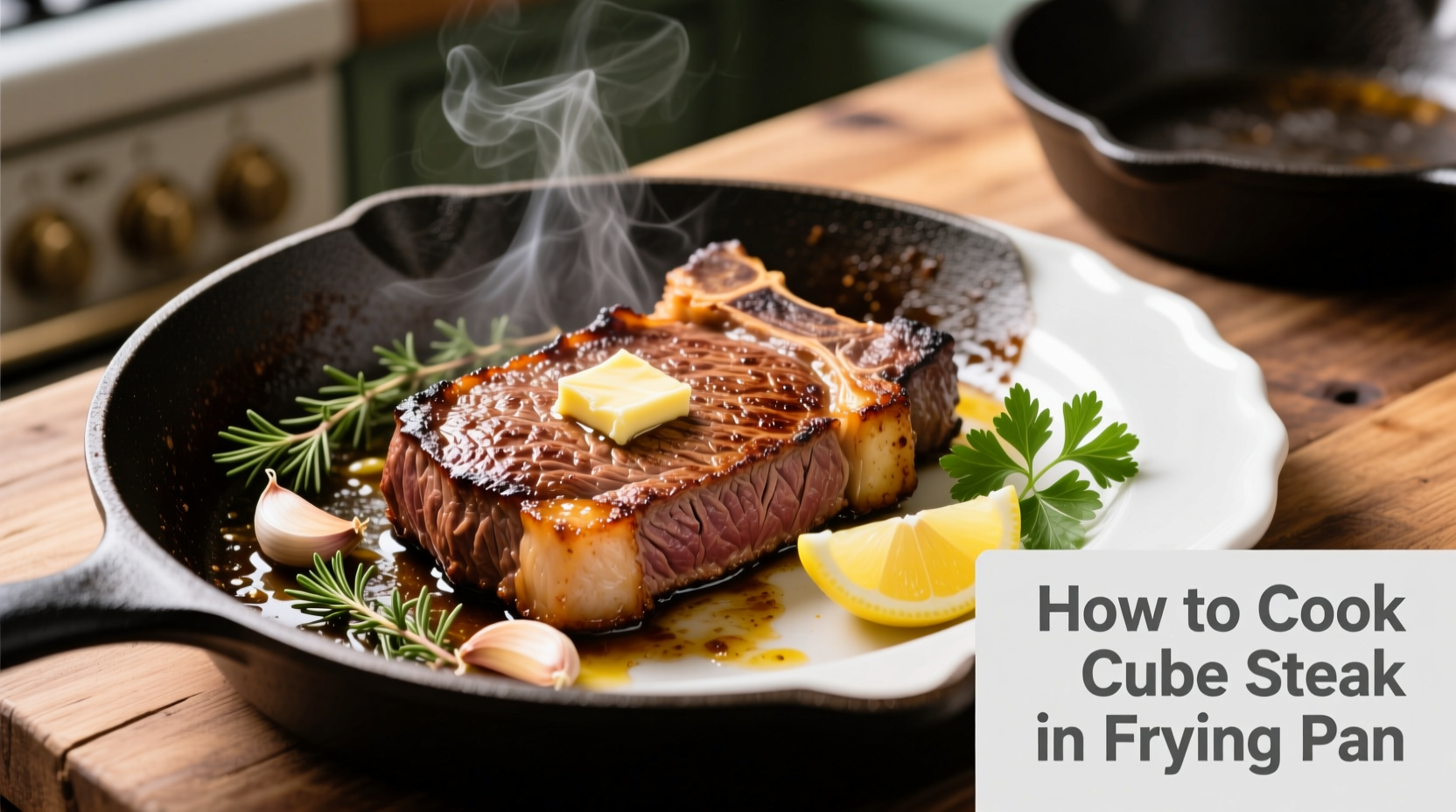Master Perfect Pan-Seared Cube Steak in Minutes
Cube steak might be one of the most misunderstood cuts in the meat case. Many home cooks struggle with tough, chewy results because they don't know the proper technique for this mechanically tenderized cut. The good news? Cooking cube steak in a frying pan is actually one of the fastest, most reliable methods when done correctly.Why This Method Works Every Time
Unlike thicker steaks that benefit from oven finishing, cube steak's thin, tenderized nature makes it perfect for direct stovetop cooking. The key is understanding that while it's pre-tenderized, it still requires proper temperature control to avoid overcooking. According to USDA Food Safety and Inspection Service guidelines, steaks should reach a minimum internal temperature of 145°F with a 3-minute rest period for safe consumption.

What You'll Need Before You Start
Gathering these essentials ensures you won't scramble when the cooking process begins:
- Cube steak (about 1/4 inch thick)
- Cast iron or heavy-bottomed frying pan
- Cooking oil with high smoke point (avocado, canola, or vegetable oil)
- Instant-read thermometer (critical for perfect results)
- Salt and freshly ground black pepper
- Paper towels for patting meat dry
Your Step-by-Step Cooking Journey
Preparation Phase: Setting Up for Success
Remove cube steak from refrigerator 20 minutes before cooking. Pat thoroughly dry with paper towels—moisture is the enemy of proper searing. Season both sides generously with salt and pepper. Properly dried meat creates the Maillard reaction that develops complex flavors.
Heating Your Pan: The Temperature Sweet Spot
Place your frying pan over medium-high heat for 3-4 minutes until properly preheated. Add 1-2 tablespoons of oil and wait until it shimmers but doesn't smoke. The ideal temperature range is 375-400°F—too cool and you'll steam the meat, too hot and the exterior will burn before the interior cooks.
Cooking Process: Timing is Everything
Carefully place seasoned cube steak in the hot pan. You should hear an immediate sizzle. Cook undisturbed for 3-4 minutes until a deep brown crust forms. Flip with tongs and cook another 3-4 minutes. Use an instant-read thermometer to check for 145°F internal temperature.
| Steak Thickness | First Side Time | Second Side Time | Rest Time |
|---|---|---|---|
| 1/4 inch | 3 minutes | 3 minutes | 5 minutes |
| 3/8 inch | 3.5 minutes | 3.5 minutes | 5 minutes |
| 1/2 inch | 4 minutes | 4 minutes | 5 minutes |
Resting and Serving: Don't Skip This Critical Step
Transfer cooked steak to a cutting board and tent loosely with foil for 5 minutes. This allows juices to redistribute throughout the meat. Cutting too soon releases precious moisture onto your plate instead of staying in the steak.
Avoid These Common Cube Steak Mistakes
Even experienced cooks make these errors that turn tender cube steak tough:
- Overcrowding the pan: Cook one steak at a time for proper searing
- Moving too soon: Wait for natural release before flipping
- No thermometer: Guessing leads to overcooked, dry results
- Slicing against the grain: Always cut perpendicular to muscle fibers
When Pan Cooking Isn't Ideal
This frying pan method works perfectly for standard cube steak (1/4 to 1/2 inch thick). For thicker cuts or if you're making chicken fried steak with heavy breading, consider starting on the stovetop then finishing in a 350°F oven for even cooking without burning the exterior. The National Cattlemen's Beef Association notes that different preparation methods suit different culinary applications—knowing these boundaries prevents kitchen disasters.
Flavor Variations to Try Next Time
Once you've mastered the basic technique, experiment with these professional chef-approved variations:
- Add garlic and thyme to the oil during the last minute of cooking for infused flavors
- Create a simple pan sauce with deglazed fond, beef broth, and a splash of Worcestershire
- Try different finishing salts like smoked sea salt for added dimension











 浙公网安备
33010002000092号
浙公网安备
33010002000092号 浙B2-20120091-4
浙B2-20120091-4